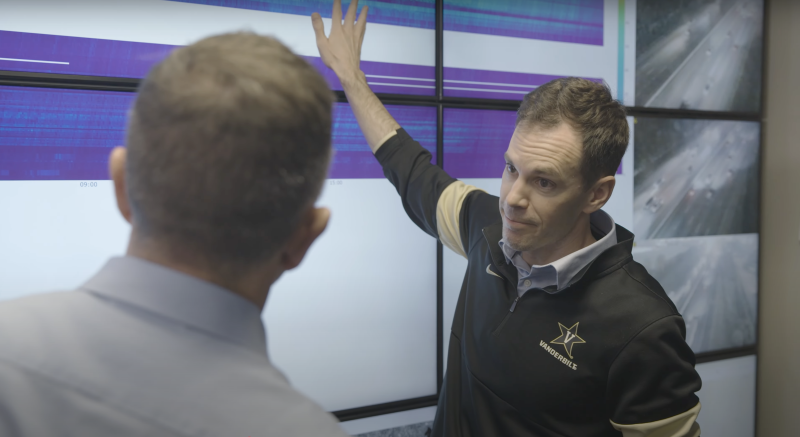Acting as a dedicated research partner, Vanderbilt University enables companies to address complex business and technological challenges—empowering them to stay competitive in a rapidly changing landscape. Vanderbilt’s Industry Collaborations team plays a pivotal role in transforming academic research into real-world impact. By strategically aligning faculty expertise with the evolving needs of industry and community partners, the team helps bridge the gap between innovation and application.
A compelling example of this mission in action is the recent collaboration between Cintra, a Ferrovial company, along with the NextMove by Cintra team, and Vanderbilt University. Together, they are collaborating on an exciting project centered on I-24 MOTION, the Tennessee Department of Transportation's Mobility Technology Interstate Observation Network, located in Nashville, TN.
I-24 MOTION is a four-mile stretch of Interstate 24 in the Nashville-Davidson County Metropolitan area that has been transformed into a high-tech research corridor, with the goal of providing a dynamic, real-world testbed for exploring advanced traffic management systems and automated vehicle technologies. Equipped with 294 ultra-high-definition cameras, the corridor captures vehicle movement in detail. Using anonymous AI trajectory algorithms developed at Vanderbilt, the data is transformed into a comprehensive digital model of traffic behavior—offering unprecedented insight into vehicle interactions on a freeway.
Together, Vanderbilt and Cintra are turning research into innovation—using insights from I-24 MOTION to directly influence Cintra’s product development, business operations, and R&D strategy. The project is being led by Dan Work, Ph.D. professor of civil and environmental engineering, with colleagues at Vanderbilt's Institute for Software Integrated Systems. This Cintra funded project leverages Work’s expertise in pioneering research on managing road congestion using mobile sensing rather than static infrastructure. "At Vanderbilt, we do traffic research, we put out instrumentation, and we find out the principles that can make traffic move more efficiently," said Work. By partnering with Cintra, Work and his team can scale that research and put in into production to make smarter, safer roads.
This collaboration exemplifies how universities can serve as a launchpad for scalable, real-world solutions by translating rigorous academic research into transformative industry tools. Jennifer Duthie, head of innovation and research at Cintra, notes, “when we come together with our partners in universities, that’s when we really start to have glimpses into how we might solve the problems of the future.”
As the work progresses, Vanderbilt and Cintra are confident in their ability to unlock new mobility solutions that benefit communities and set the standard for transportation innovation. This project is also a testament to Vanderbilt’s broader mission: driving innovation through partnerships.
“This collaboration clearly personifies what is possible when world class researchers and industry come together to co-develop real-world solutions. At Vanderbilt, we are continuously looking for ways to increase impact while being viewed as a valuable collaborator with industry partners,” said Chris Rowe, executive director for industry collaborations, in the Office of the Vice Provost for Research and Innovation.
To learn more about how Vanderbilt connects academic research with industry needs, connect with Industry Collaborations.

